Charles II



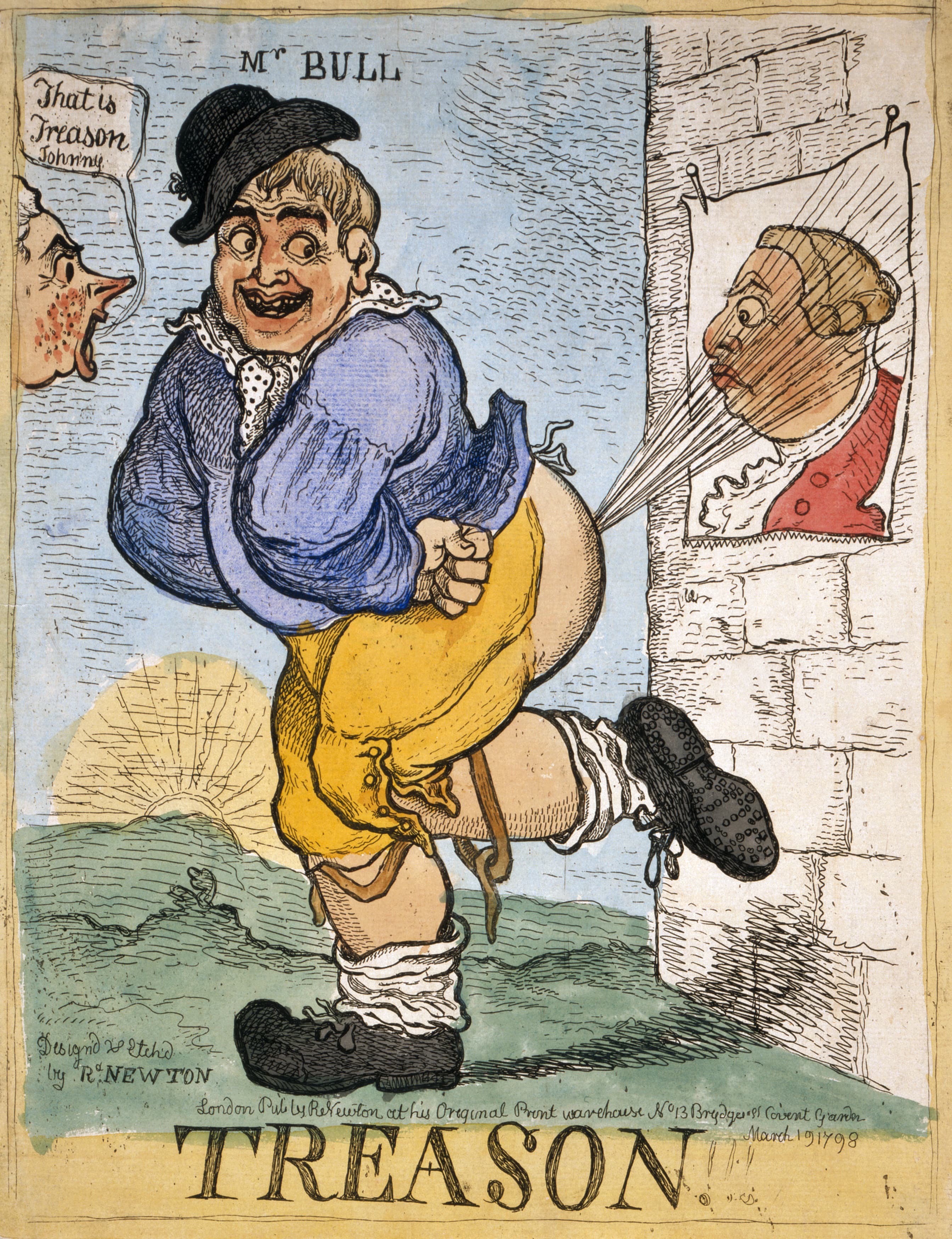
Jonathan Swift is prompted to publish this piece, “The Benefit of Farting Explain’d,” in 1722 because he has found that ever since women have begun drinking tea and coffee they have been suffering from a “Train of Distempers, scarce known to our Forefathers” and “as universal among us as the Small Pox.” He thinks it is dangerous to the health of women to drink coffee and tea. But he does agree that coffee in the mornings at home “promotes free Circulation of Intelligence” in women since they are forbidden from expressing that intelligence in the public coffee houses. Coffee houses were first established in England in Oxford, by a Jewish entrepreneur named Jacob in 1652 (Wikipedia).
This is a work of satire, but it does take the usual form of a “wise” man talking down to everyone else while simultaneously making themselves sound like they are merely motivated to help instead of criticize. The work is predominately sexist to our modern eyes. At the time, Swift was criticizing the taboo of farting that was cropping up in polite society. The taboo still exists.
But on another level, this also represents the rapid adoption of tea, coffee, and chocolate into European diets and people’s reactions for or against it. Just a cursory look at books from this period tells one of the drama around these new imports:
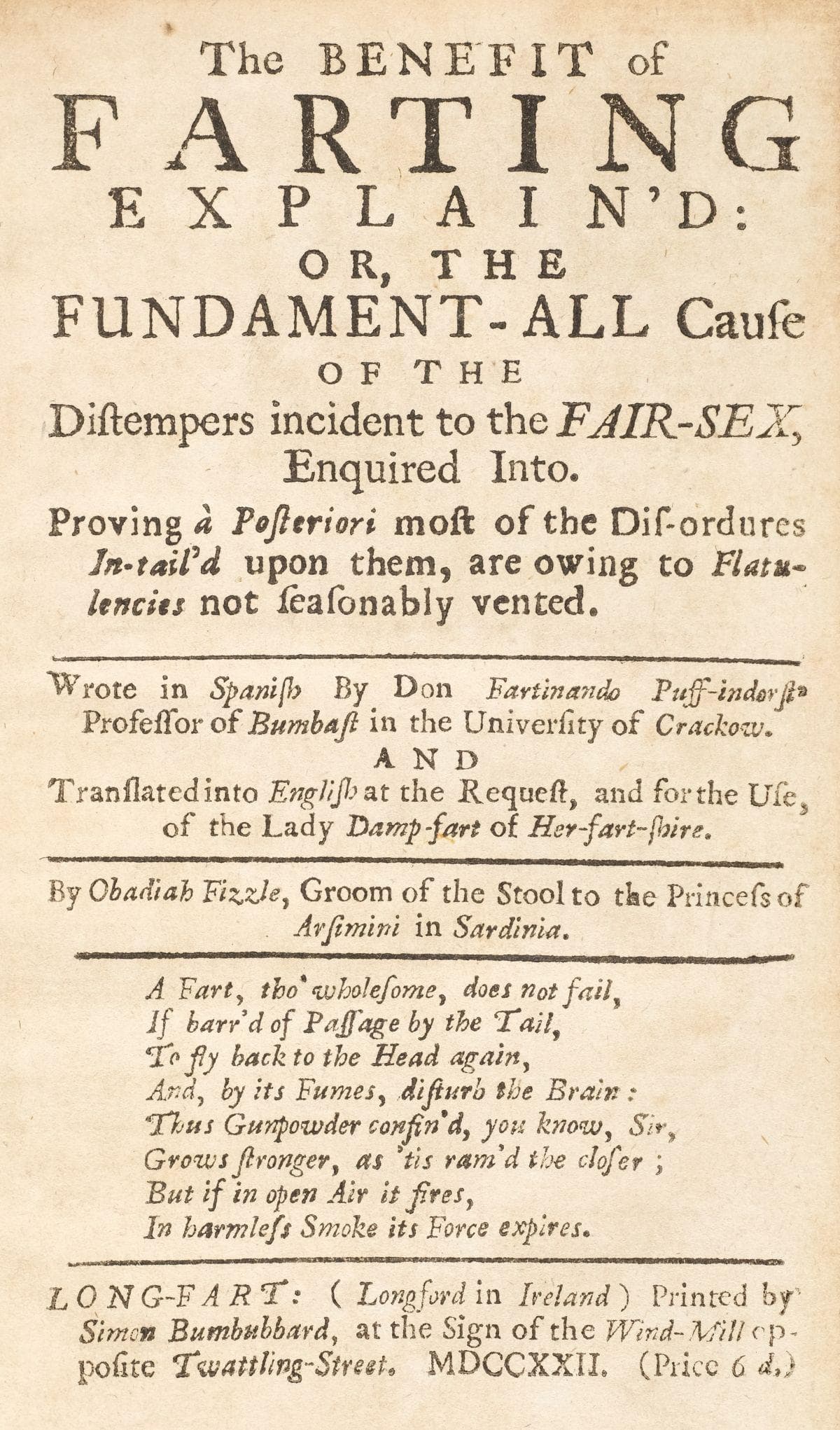
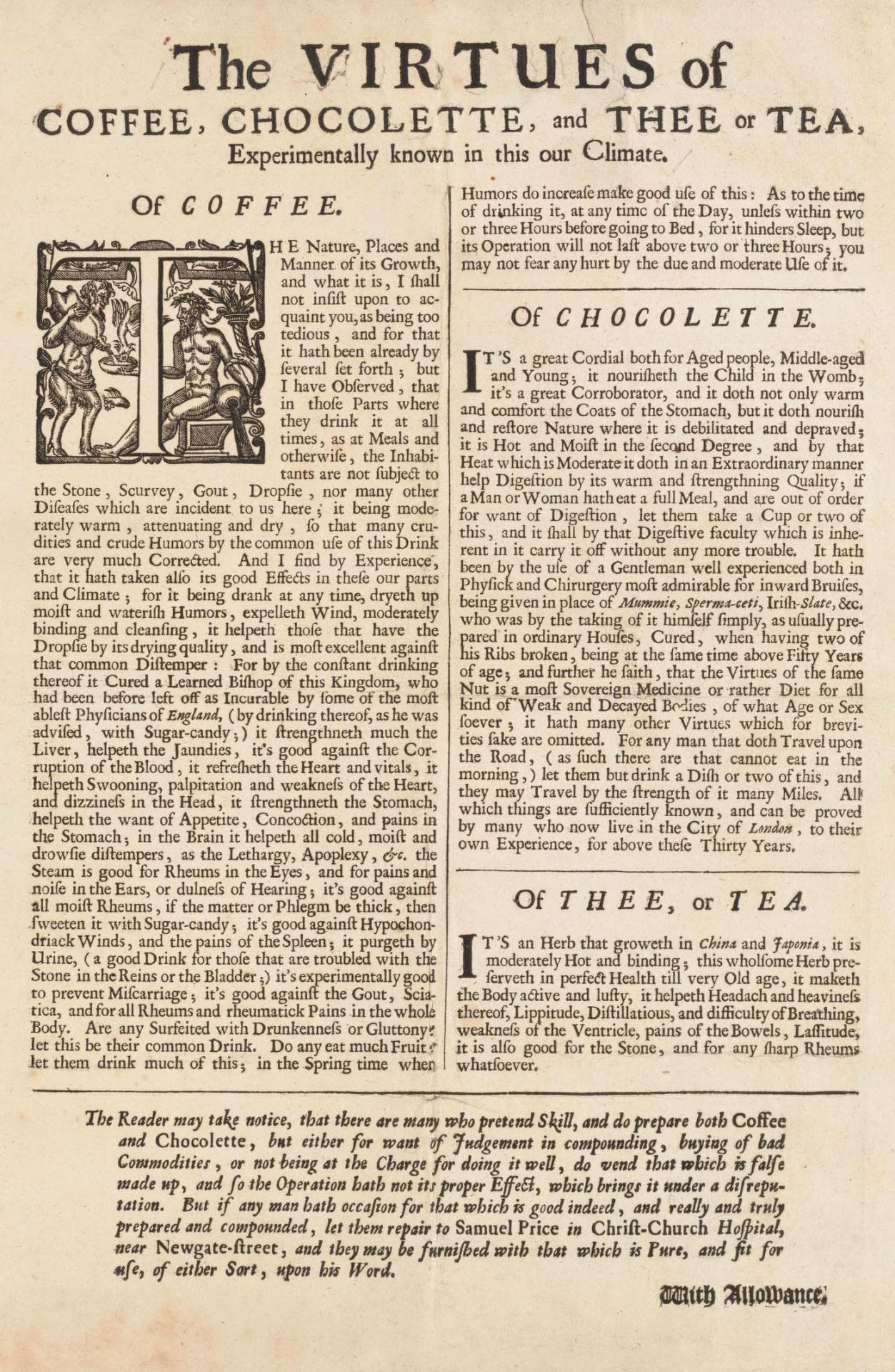
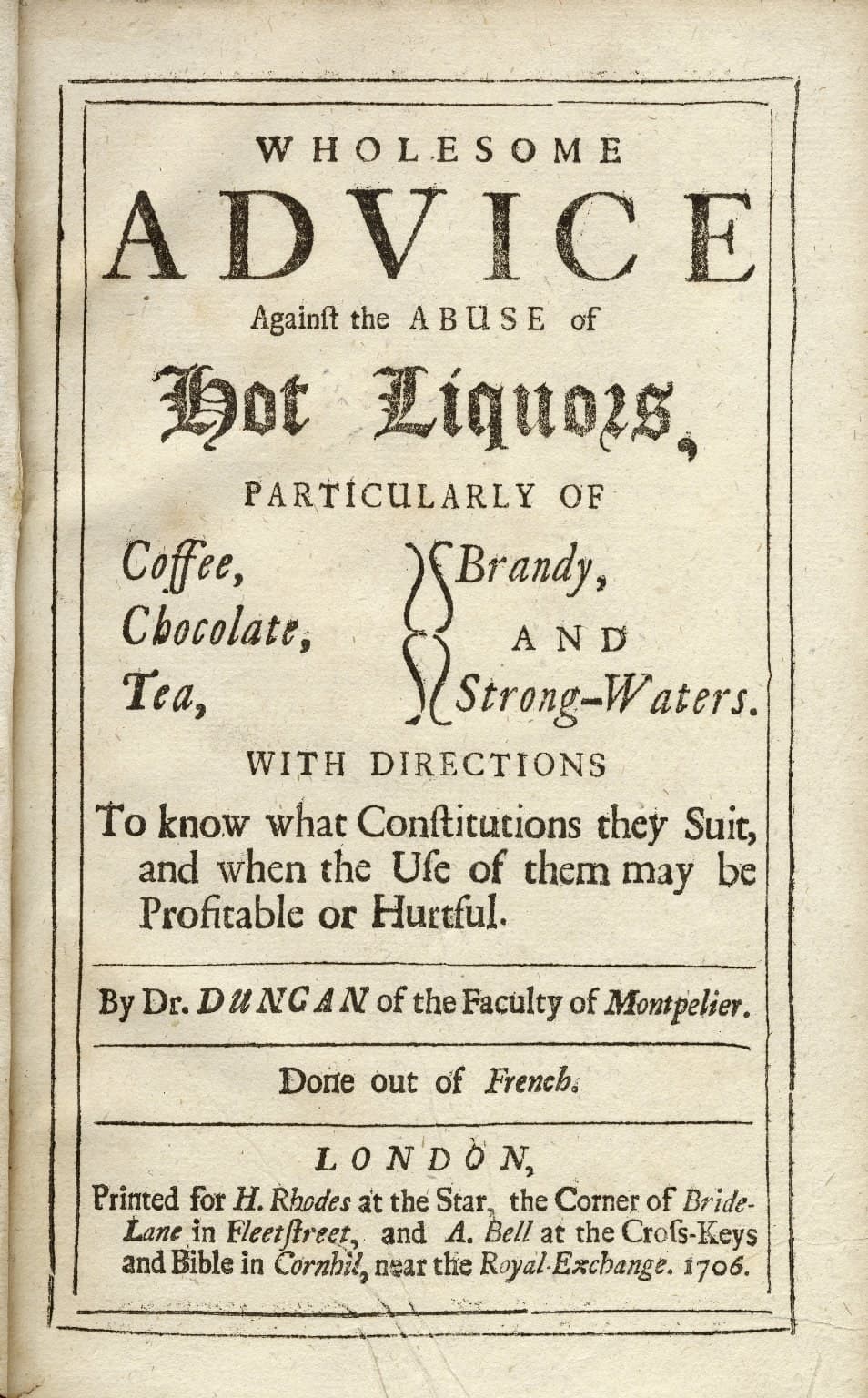
Thus, since the drinking of coffee and tea also causes ingestion of air, the author argues that more and more farts are being produced inside the bodies of women. One “reasonable FART” might prevent all the diseases that women force upon themselves by holding their farts in. Yes, indeed, the idea that women do not poop or fart has persisted since at least 300 years ago.
If one does not fart, it is the “first cause of Quakerism, and Enthusiasm.”
Jonathan Swift then designs to go about the topic thusly: first, to explain the substance of a fart; secondly, to “shew the ill Consequences of suppressing it;” thirdly, to prove it’s lawfulness; and fourth, the benefit of farting.
First, the author brings up a debate amongst scholars. Is a fart substance or “spirit?” The physicists insist it is purely a “spirit.” It must be a spirit, because a fart, which hardly weighs a “thousandth part of a Grain” will “in one Minute, expand itself so far, as to occupy the whole Atmosphere of a large Drawing Room.” That is certainly true.
The chemists claim it is a substance since it’s sulphuric smell can be both ignited and detected by the nose. A certain Cartesius claims to have cooked it up into a sort of saltpeter according “to the French Taste” and used it for gunpowder but unfortunately “blew up” his beliefs.
The mathematicians argue a middle ground: a fart is a quantity (as the chemists claim) but it is indivisible (as the physicists claim).
Jonathan Swift thus defines a fart as “A Nitro-aerial Vapour, exhal’d from an adjacent Pond of Stagnant Water of a Saline Nature, and rarified and sublimed into the Nose of a Microcosmical Alembic, by the gentle Heat of a Stercorarious Balneum, with a strong Empyreuma, and forc’d through the Posteriours by the Compressive Power of the expulsive Faculty.”
My thoughts exactly.
Secondly, Jonathan Swift then claims that the suppression of farts by women “vents itself intirely in Talkativeness; hence we have a Reason why Women are more Talkative than Men.” This is why, he claims, we have the idiom “Tell a Tale, or let a Fart.” The frequent fits of laughing and crying called “vapours” or hysterics is caused by the suppression of farts. When the air travels internally, it first tries exiting as a laugh. If it reaches the top of the head, though, it can turn into tears.
This is ridiculous to read.
Thirdly, Jonathan Swift sets down that farting is not forbidden by any law, and “where there is no Law, there can be no Transgression.” Both the Law of Nature and Cannon Law are for it, but Civil Law is against it until King James I wrote “HERE ALL FARTS ARE FREE” above his castle gate after a man died in his presence from holding in his fart.
If some “Toast of the Town” were to make farting fashionable, then everyone would adopt it. He then goes on to claim the high esteem farting holds in Holland and France.
Finally, the benefit of farting would make women both happier and help them save money on medicines used to cure the symptoms of holding in their farts. Farting can also make others laugh from the occasion. “The Celebrated Author of a Book, called, Laugh and Be Fat, proves Laughing to be a very wholesome Exercise.” The author then goes on to claim that farting was why music has harmony: musicians noted that when two people farted next to each other, they produced different pitches. Listening to a performance of farts at the tea table is much preferable to idle gossip.
Scatological humor, which is what we call poop jokes in academia, was as common in the past as it is today. Mozart, Jonathan Swift, and Benjamin Franklin were all found of writing these jokes in their letters and pamphlets. When we are shocked to find that such learned men indulged in such petty humor, we should remind ourselves that nearly every one loves a good poop joke.
And yet, even today there are legitimate health articles on the Internet that need to reassure people that farting is indeed beneficial and okay. Let us state once-and-for-all that bowel movements are healthy, humorous, and necessary.
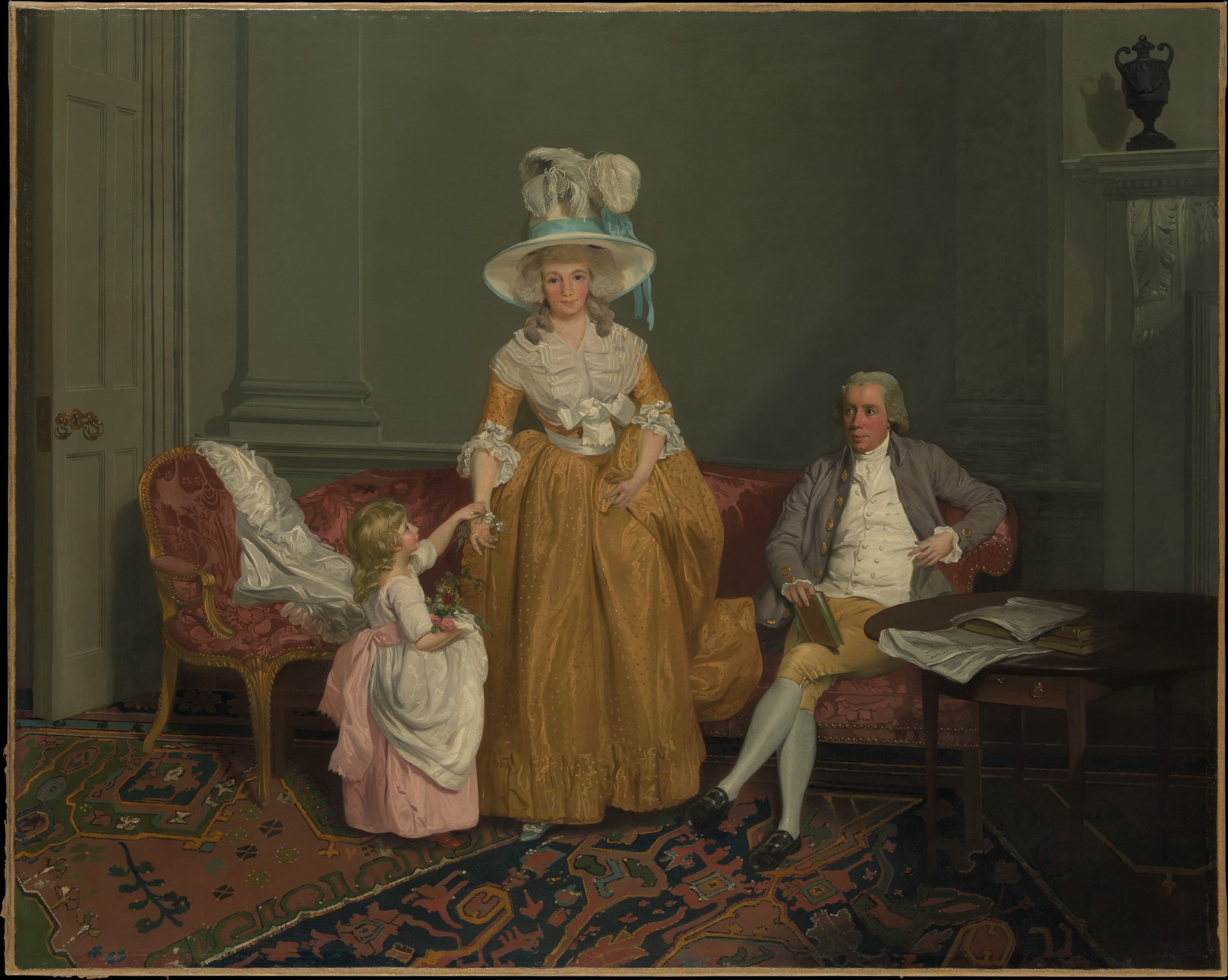
In the corner of this painting is an unmistakable Wedgwood & Bentley black basalt vase with upturned handles. I have not located the exact form, but there are similar ones listed below. The painting dates from 1785.
However, the Metropolitan Museum states that “[a]t first glance, the vase on the mantelpiece seems to be a piece of “Black Basalt” (also called “Egyptian black” or “Etruscan ware”), a refined stoneware colored with cobalt and manganese oxides, invented by Josiah Wedgwood (1730–1795) in 1768; however, the painting’s vase seems to have no exact match among ceramics of the period and may, instead, be made of wood, a less expensive alternative to stoneware but one that would nevertheless have served to indicate the owners’ sophisticated, classicizing taste.”
Recently as of 2020, I have located a Wedgwood vase so strikingly similar to the one in the painting that it must be a form produced at the time. What is interesting about material culture is that the facts and knowledge constantly shift as we uncover more and more objects lurking all over the world.
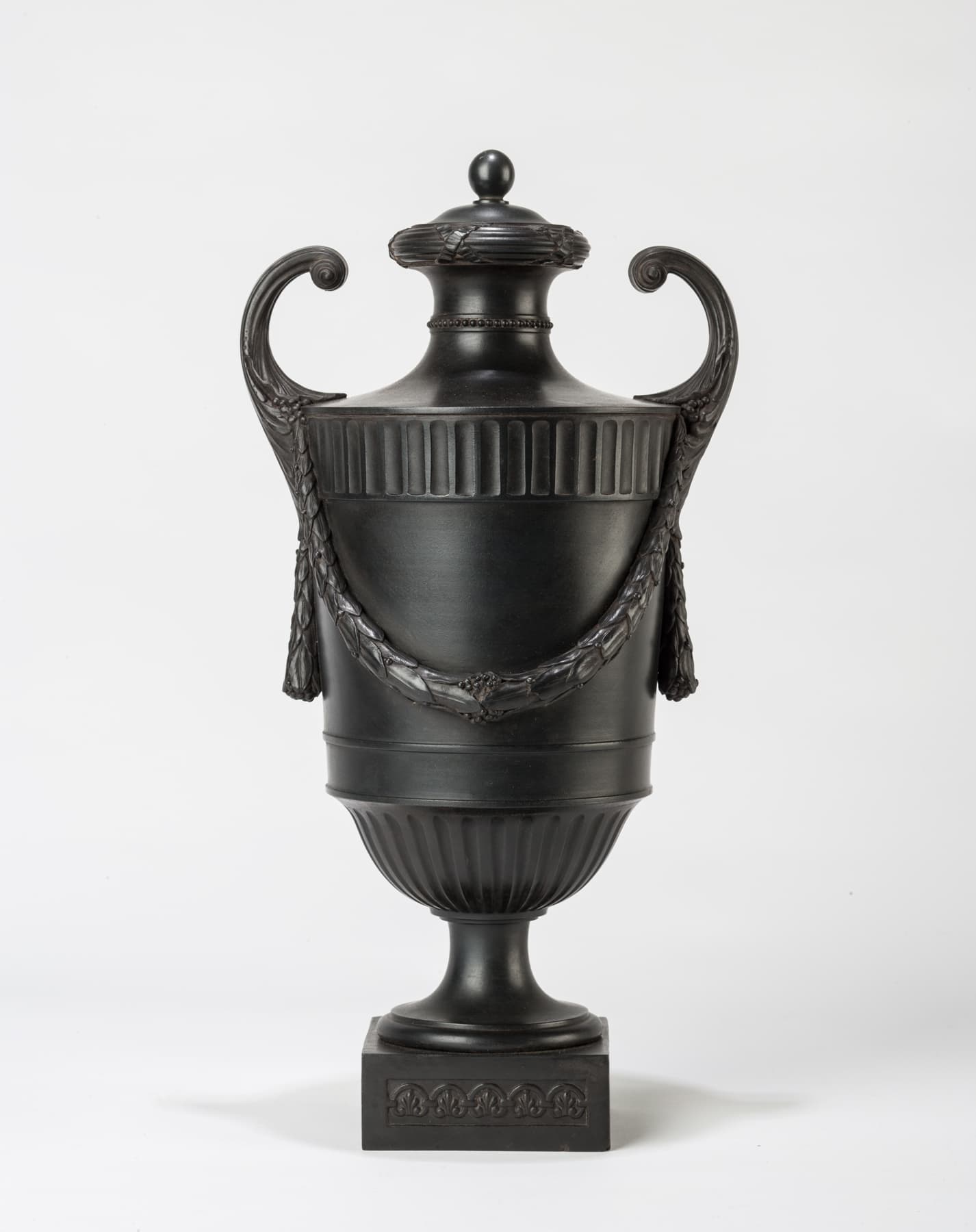
Like many of my projects, I created the majority of messaging and writing as well as design. In my mind, the two are quite inseparable. Graphic design, after all, only develops in symbiosis with industrialism, consumerism, and modern marketing. Before then, no such profession exists. The closest we get to “graphic design&dquo; as a profession is in bookmaking. The closet we get to branding is in publishing once again and heralds and the use of emblems by the nobility.
Graphic design is part of the democratization of consumption engendered by the industrial revolution. At the core of it, it is the communication of availability to a market. Communication: spoken, written, heard, touched, or smelled is the core of good design. Without centralized bureaucracies of the nation-state, without mass-literacy, without consistent transportation networks, graphic design is not useful.
In Twice’s rebranding, my main goal was to embody the idea that “secondhand never looked so good.” Gone were the stigmas of used clothing and musty retail stores. In it’s place: I championed a clean style of bright colors, comfortable simplicity, and smiles. The strong operational backbone of Twice made this brand experience carry over literally into the fast shipping, easy checkout, and product-heavy focus of the application. Surrounded by some of the most talented people in the Bay Area, we created an experience that elevated and made accessible the secondhand marketplace to everyone.
As Creative Director, I worked alongside product, engineering, customer support, and marketing teams intimately. My colleagues consisted of designers eagerly improved themselves through continuing education and work. A strong mind produces a strong hand. Design education aided us when solutions weren’t obvious.
We faced many challenges: a lack of creative direction before, a large and fine-tuned product already in use, and a small team. But then again, most startups face very similar issues. I at first worked closely with leadership to develop a crisp plan to have every property re-branded and launched within six months. We did it in four.
Web and product were the primary concern, but my greatest pleasure at Twice was working on photography. We developed a completely in-house photography team: stylists, photographers, and creative were all handled by the very same people who worked at Twice. Our drive to present a new face to secondhand clothing blossomed in the photographic work.
One must choose between God and Man, and all ‘radicals’ and ‘progressives,’ from the mildest Liberal to the most extreme Anarchist, have in effect chosen Man.
“But it is not necessary here to argue whether the other-worldly or the humanistic ideal is ‘higher.’ The point is that they are incompatible.” George Orwell reflects on Ghandi, showing his political side along the way: “The essence of being human is that one does not seek perfection, that one is sometimes willing to commit sins for the sake of loyalty, that one does not push asceticism to the point where it makes friendly intercourse impossible, and that one is prepared in the end to be defeated and broken up by life, which is the inevitable price of fastening one's love upon other human individuals.”
He suggests being a saint is not an ideal to work towards and that the unevenness in life is valuable. The thoughts on Ghandi in 1949 are interesting because Orwell can look at Ghandi in a post world war world and also examine Ghandi’s beliefs that are often glossed over by popular accounts — beliefs Ghandi professed himself.
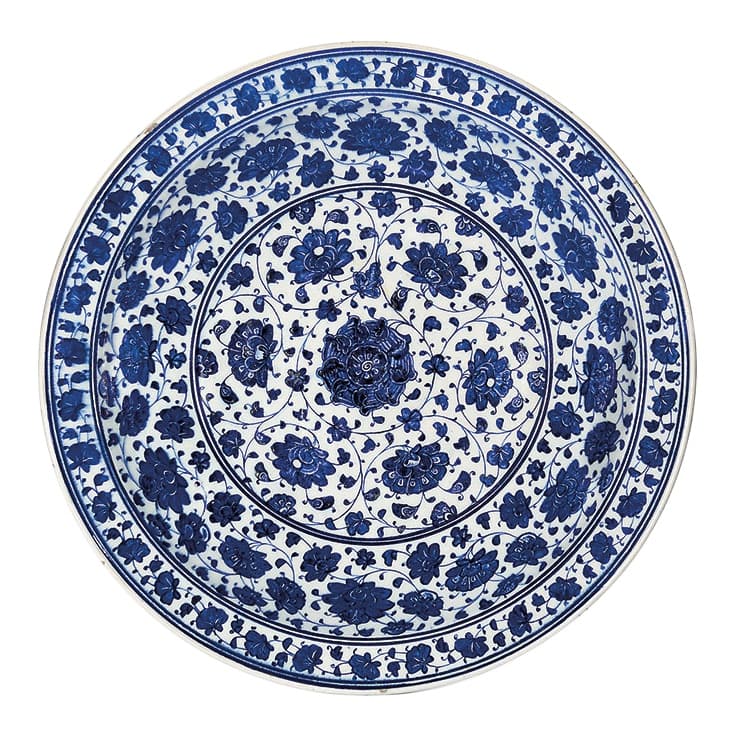
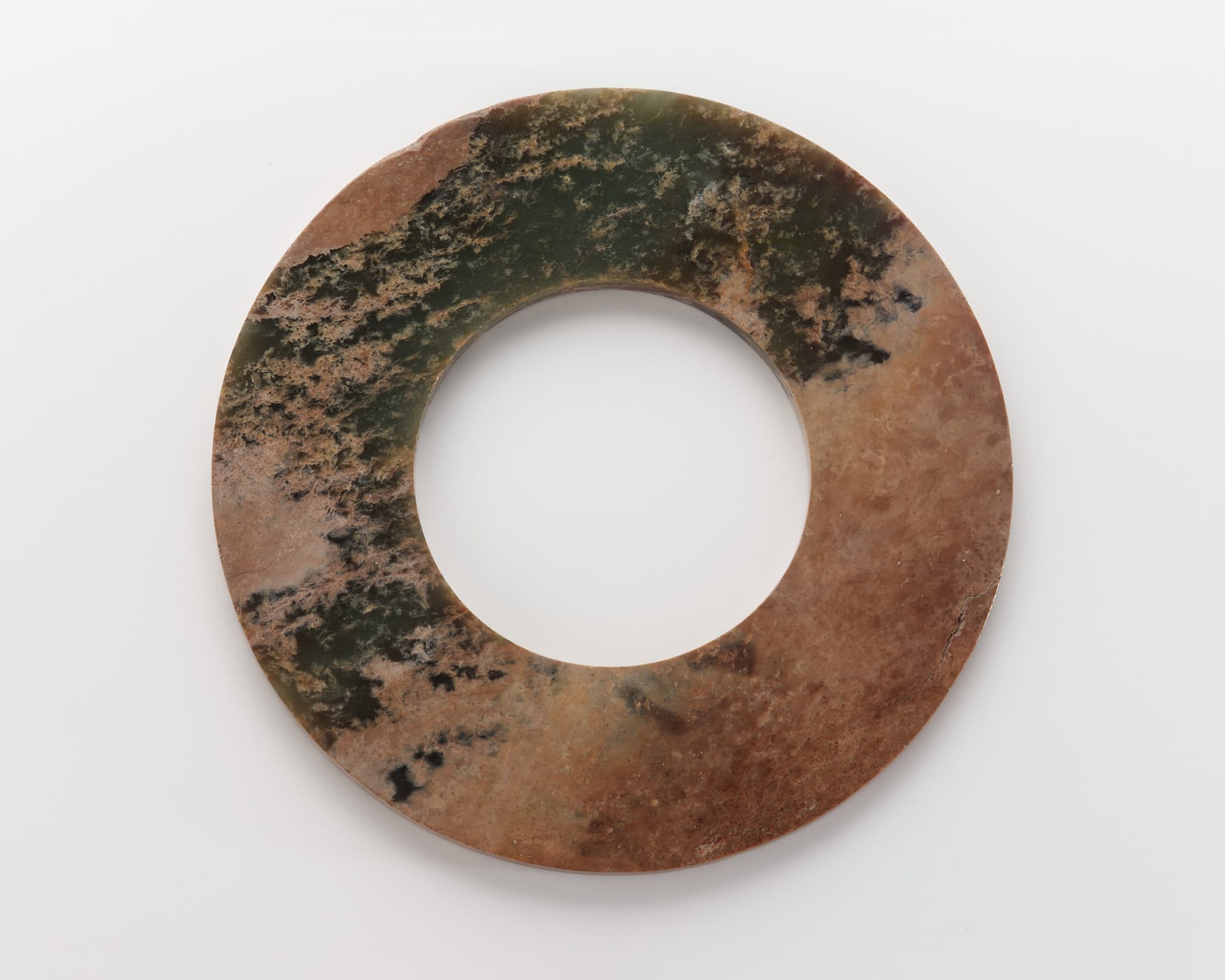
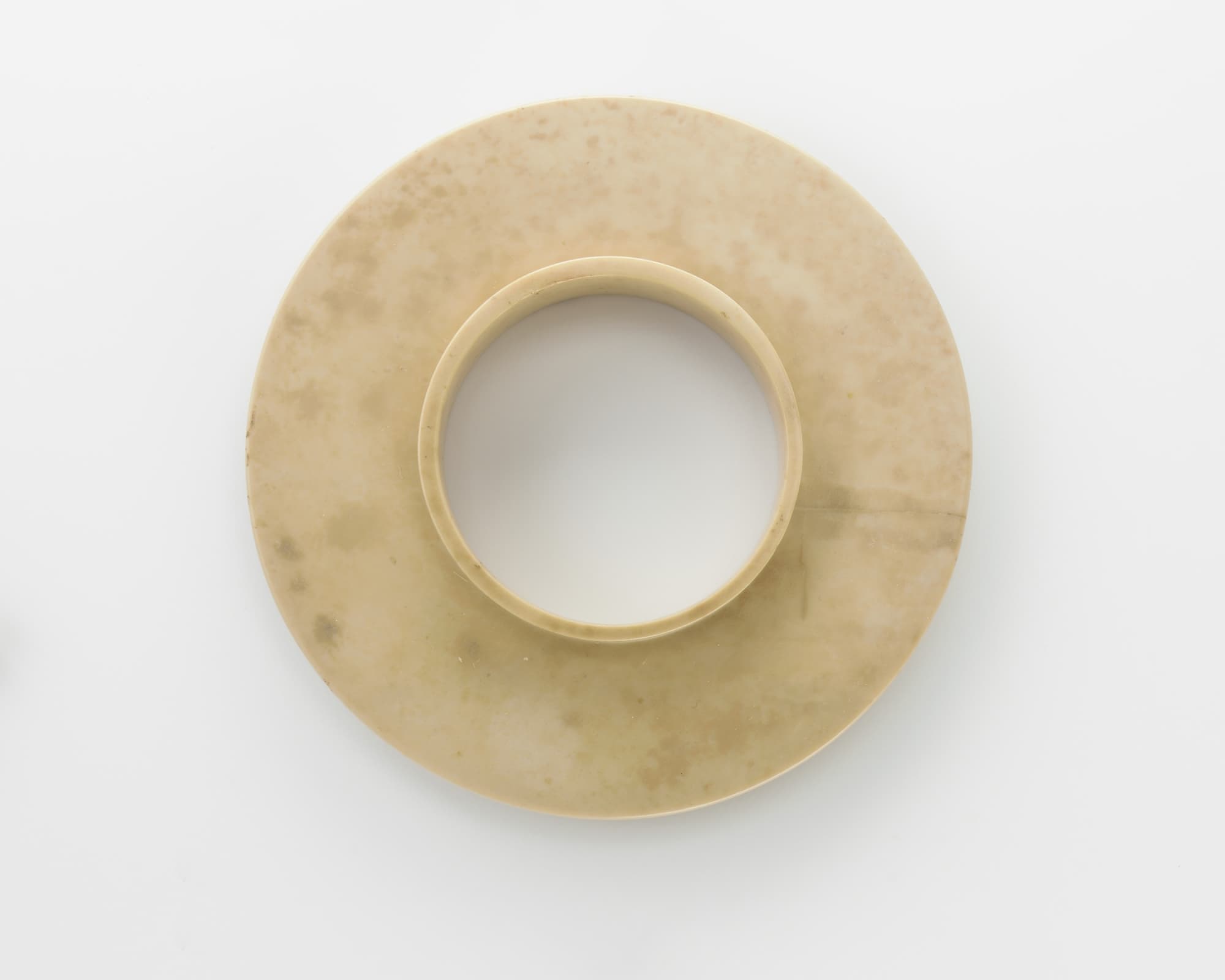
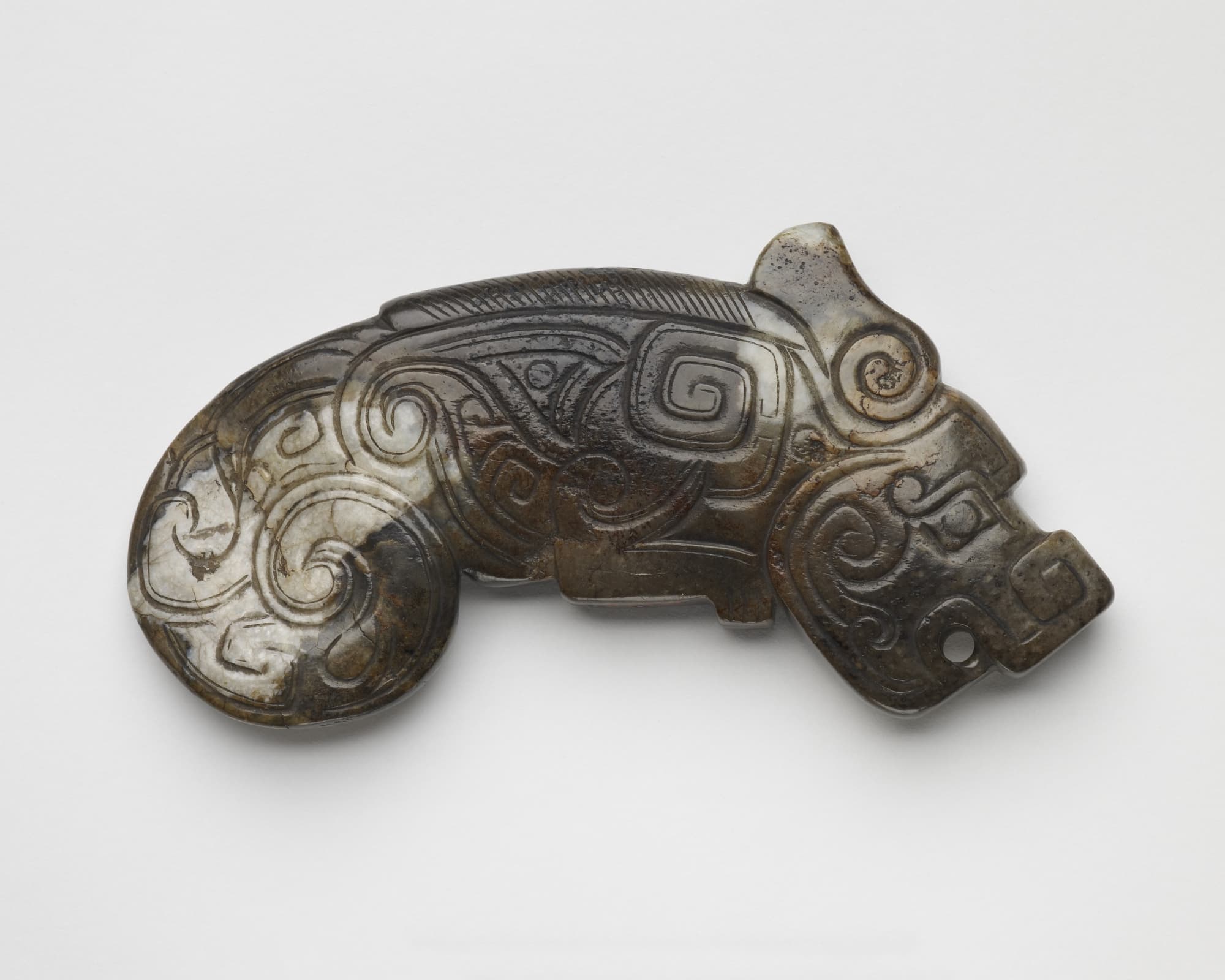
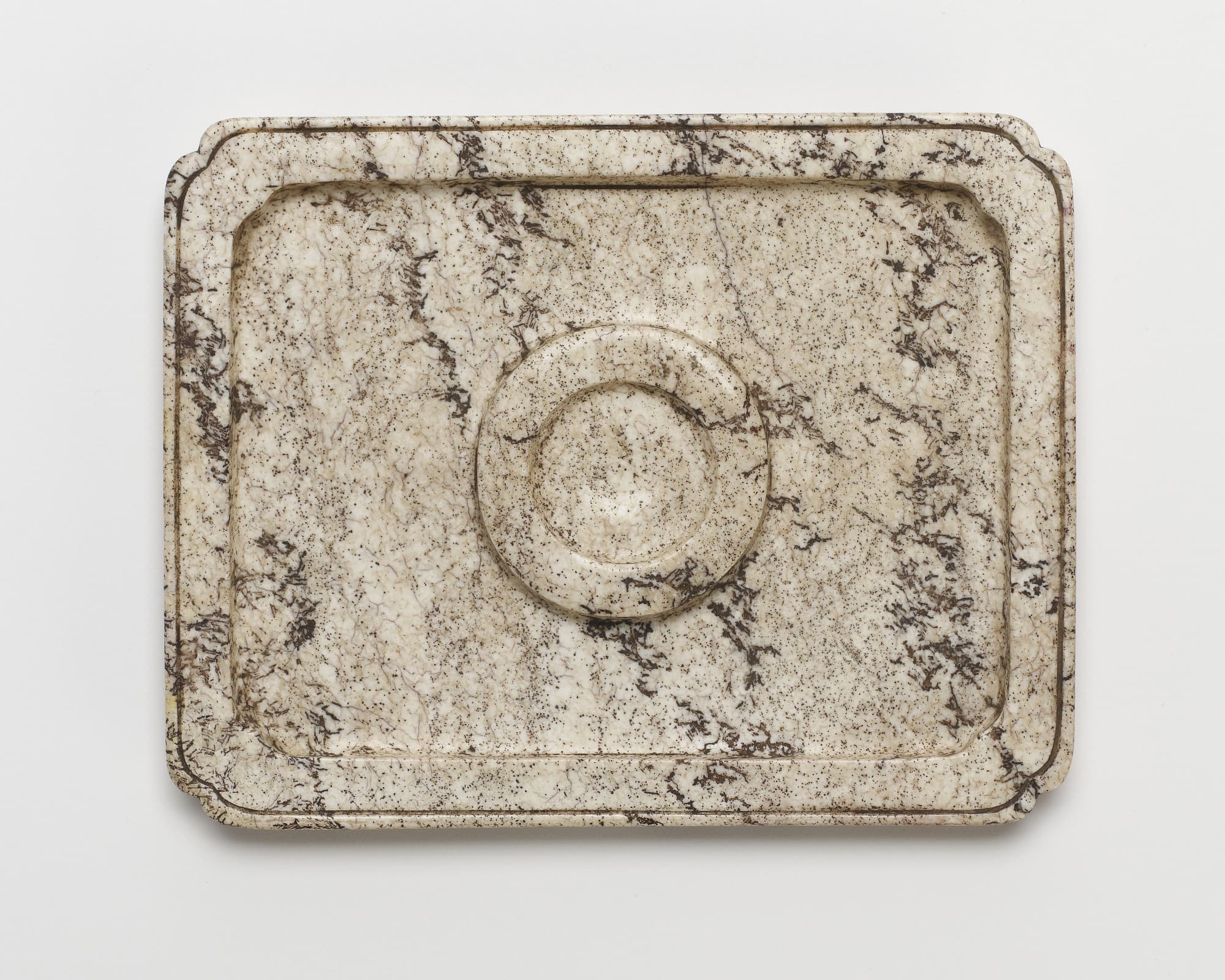
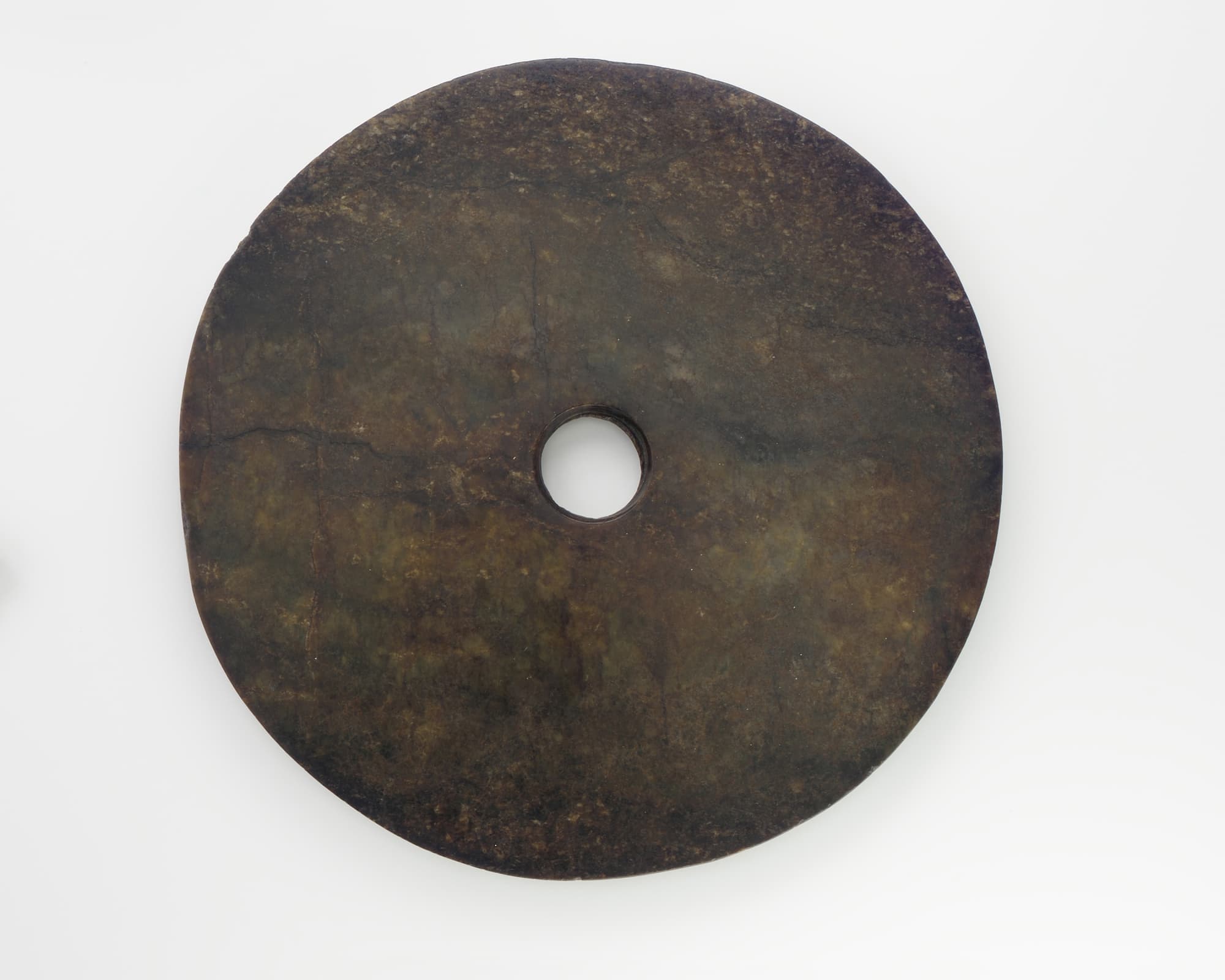
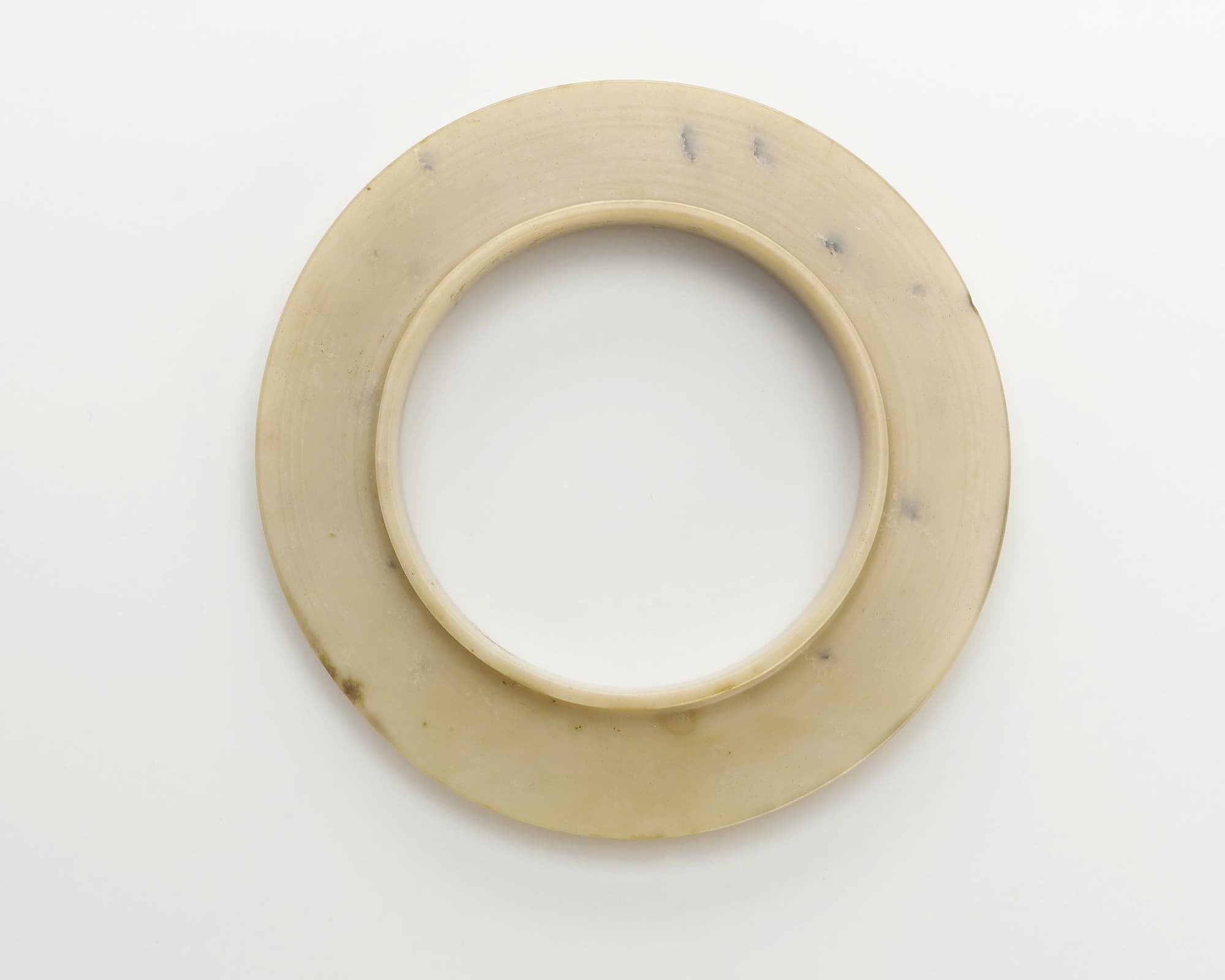
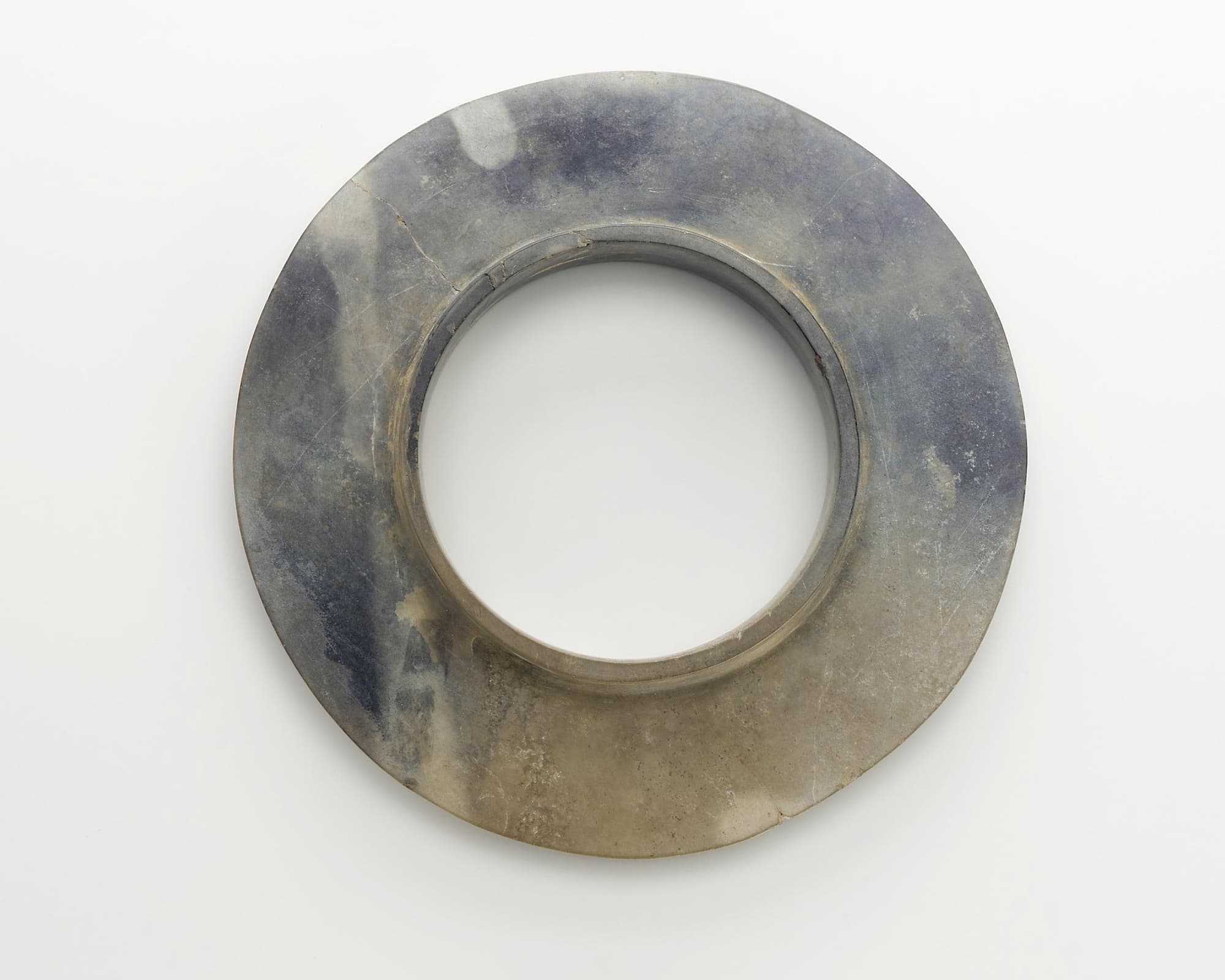
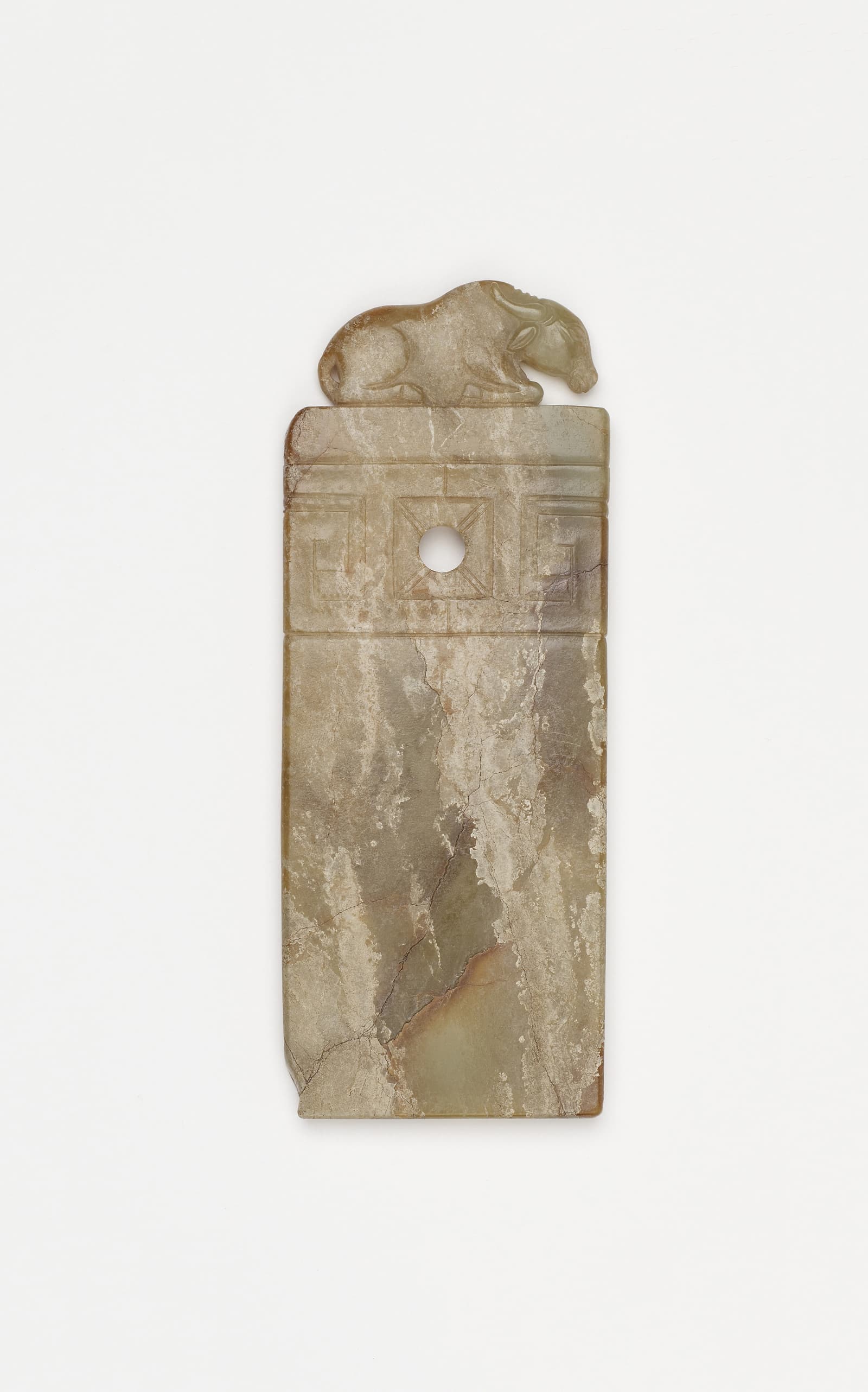
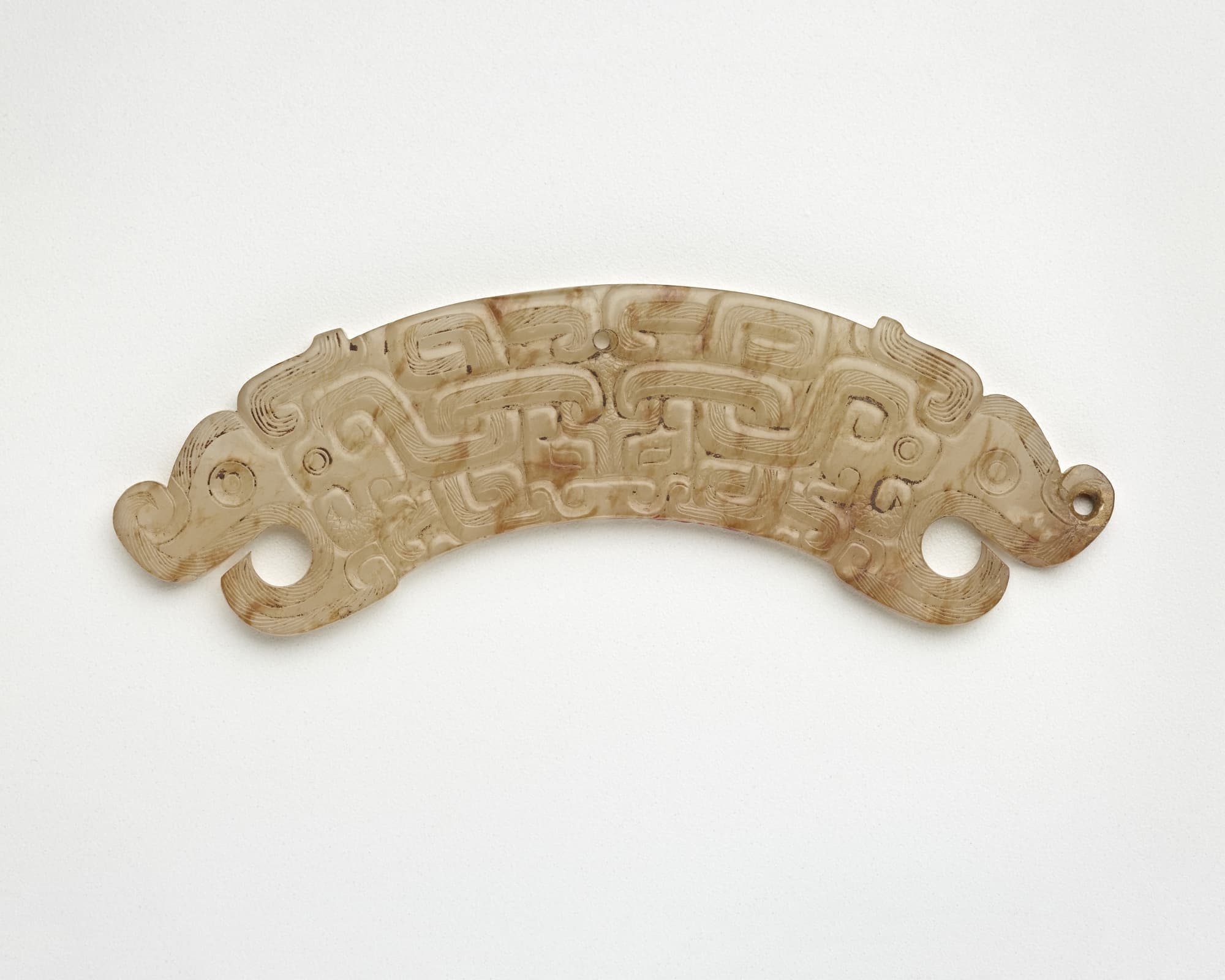
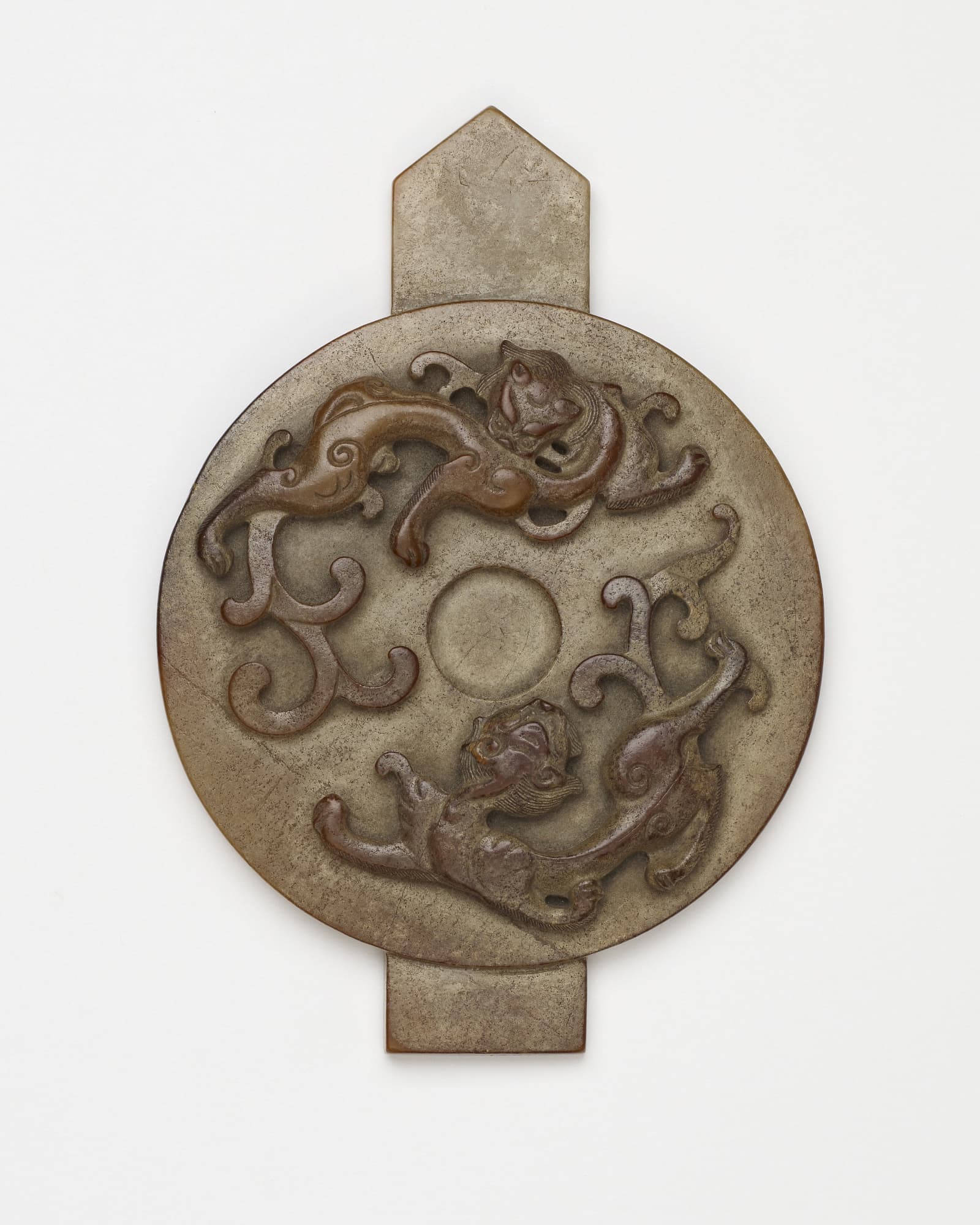
A collection of sublime jade objects from the Freer & Sackler Galleries of the Smithsonian. Jade — for all its popularity as a green stone — is strikingly colorful. Jade covers nearly every hue, and we would do well as artists to take advantage of these characteristics. Jade isn’t just green after all.
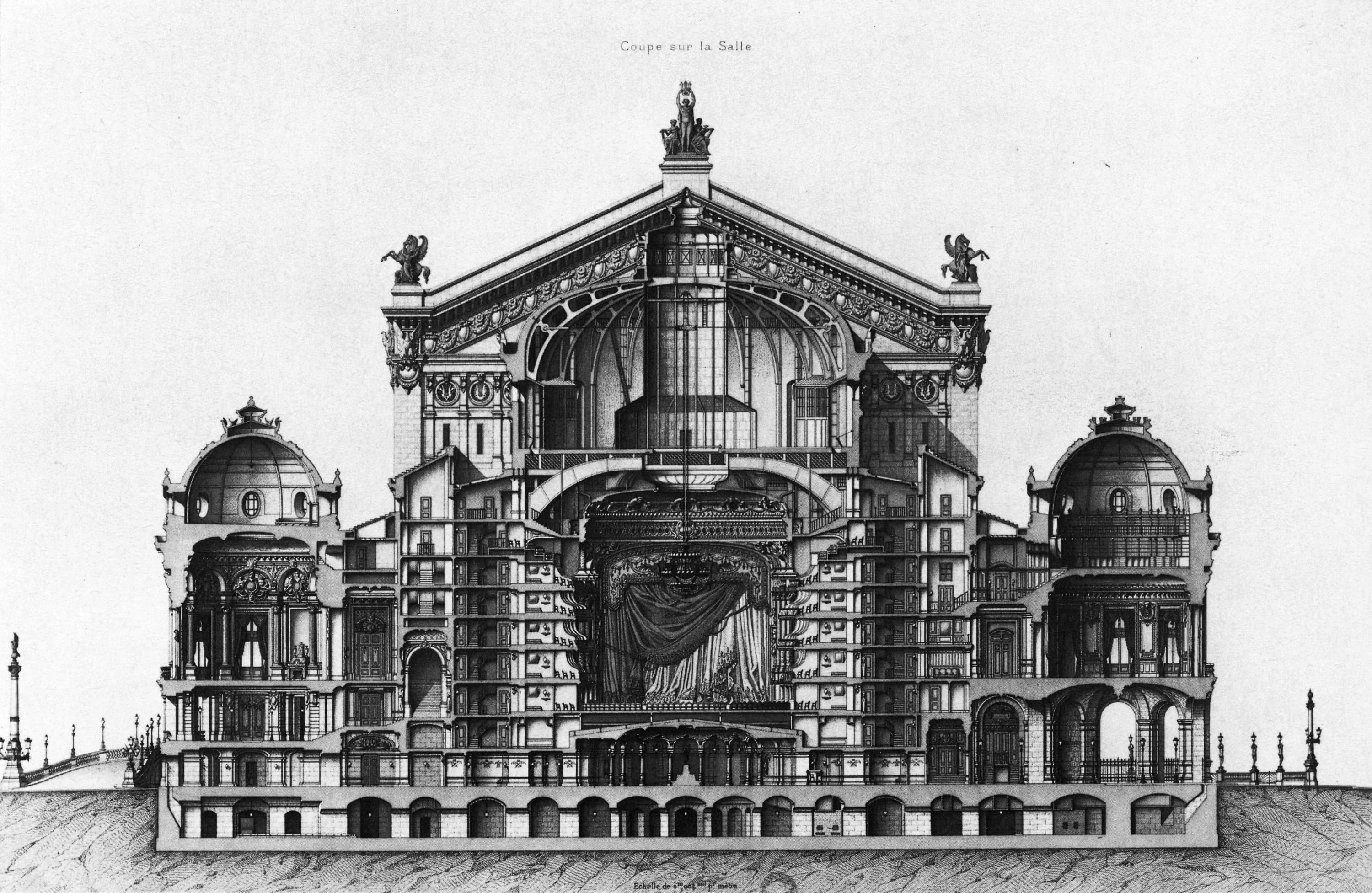


One common example of skeuomorphic design mentioned by designers is the simulation of paper texture on the screen (Apple being the most common user of this aesthetic). What you may not realize is that the simulation can go even farther in our visual past. Above is just one example.
This is an etching printed on paper, but the etching simulates curled paper on the top left corner. Simulating paper on paper itself? You might as well simulate pixels on a computer screen.
The etching is a view of the Süleymaniye Mosque built in the Ottoman Empire in the sixteenth century.